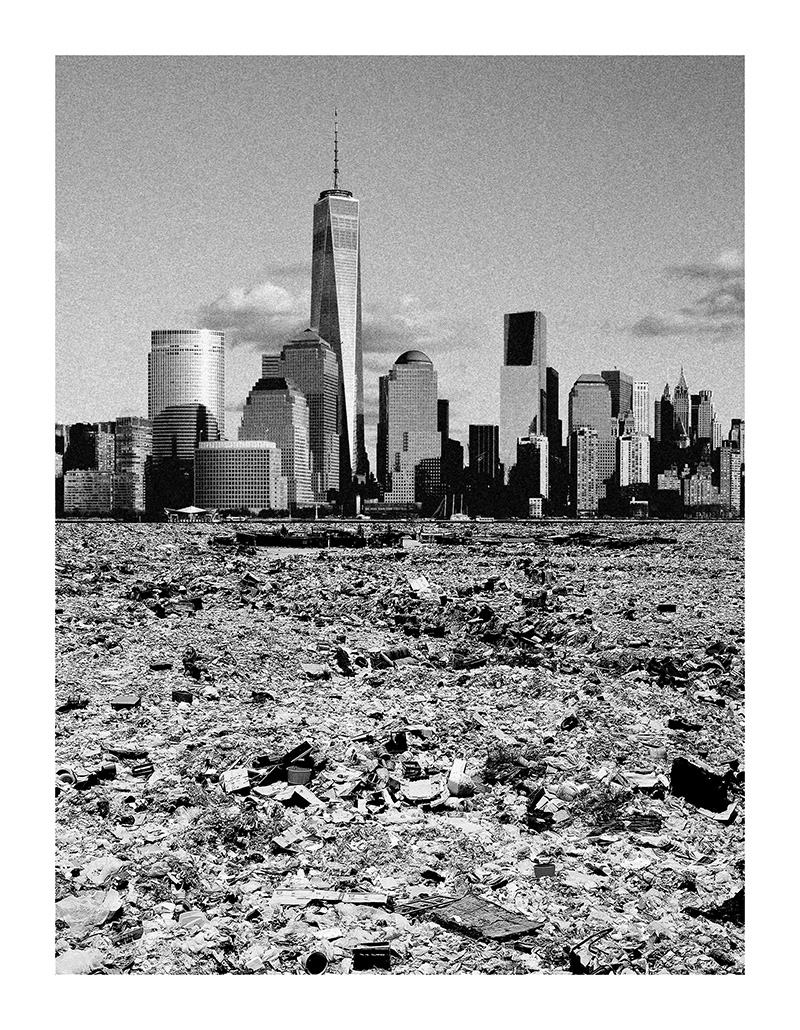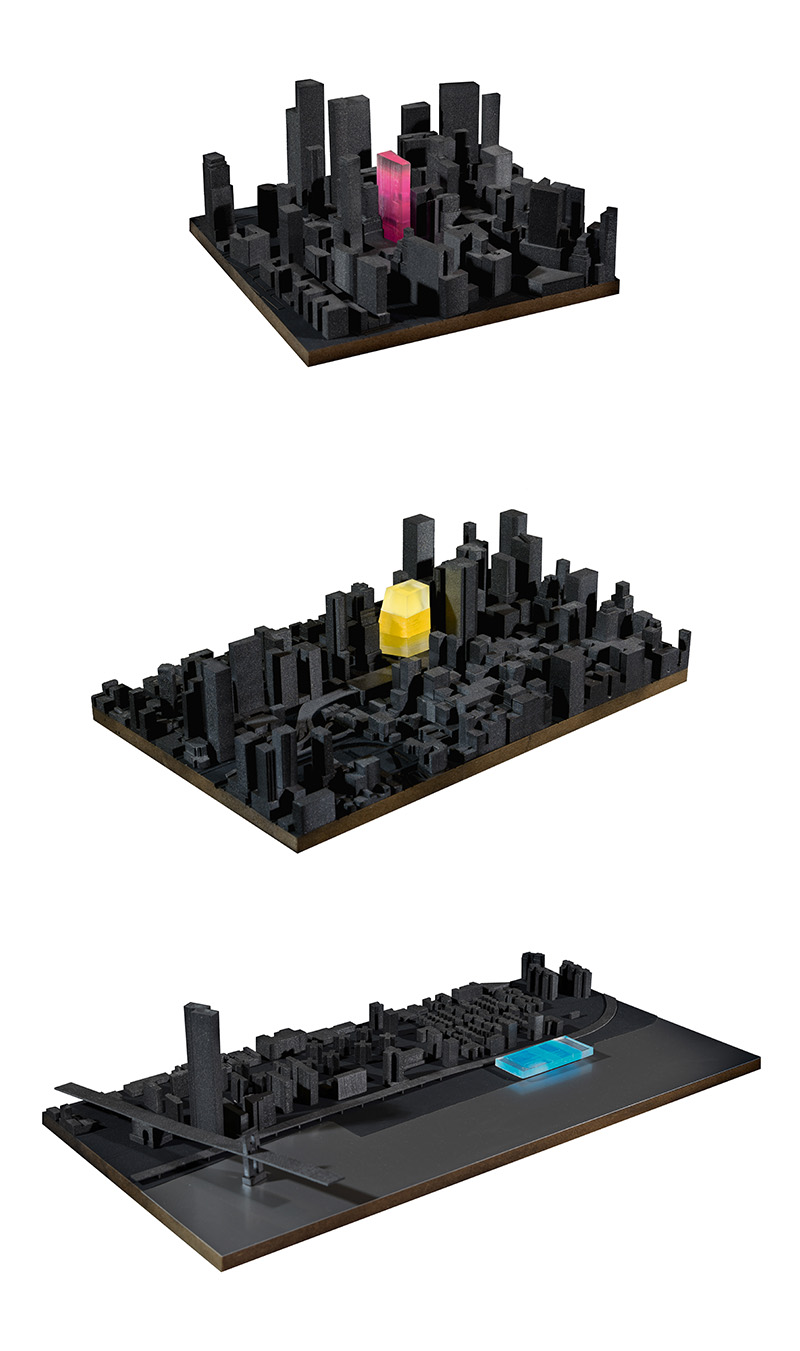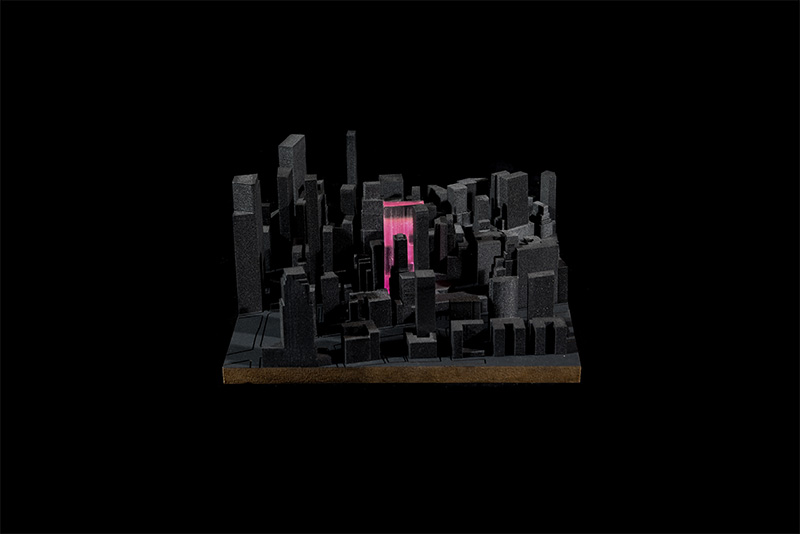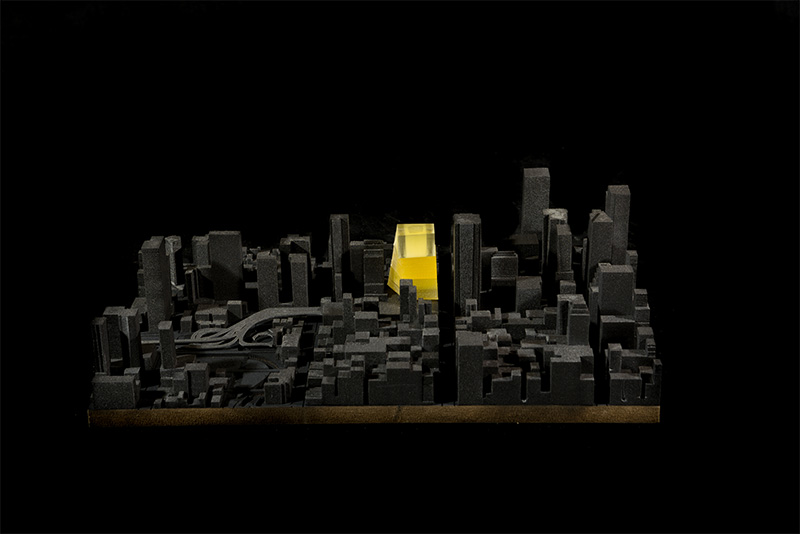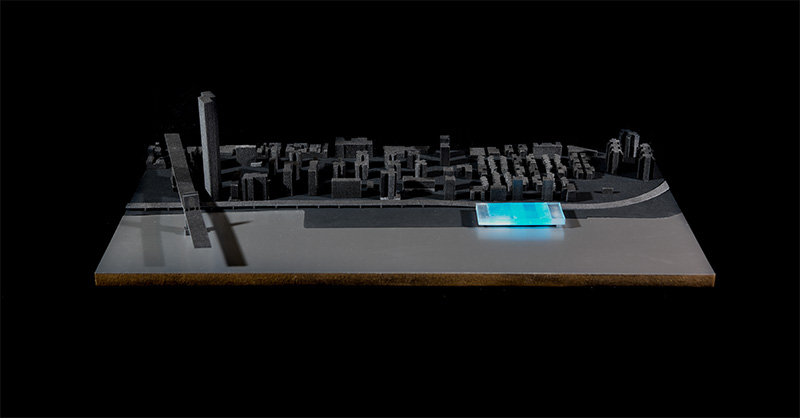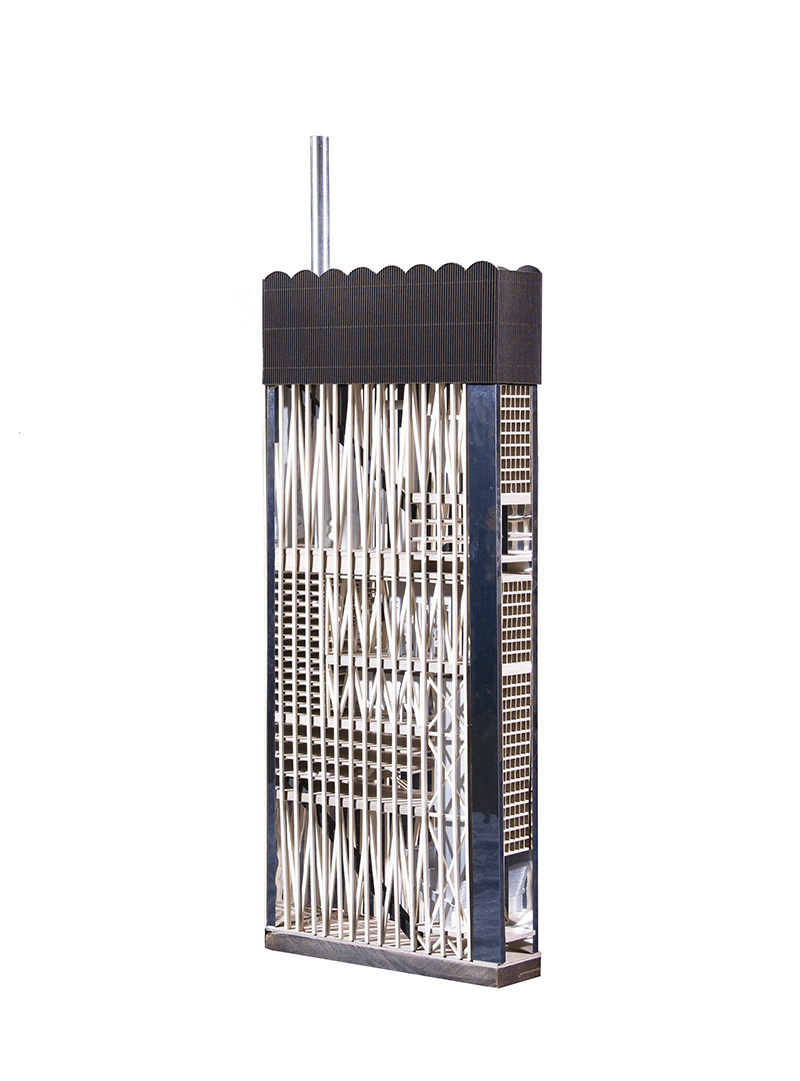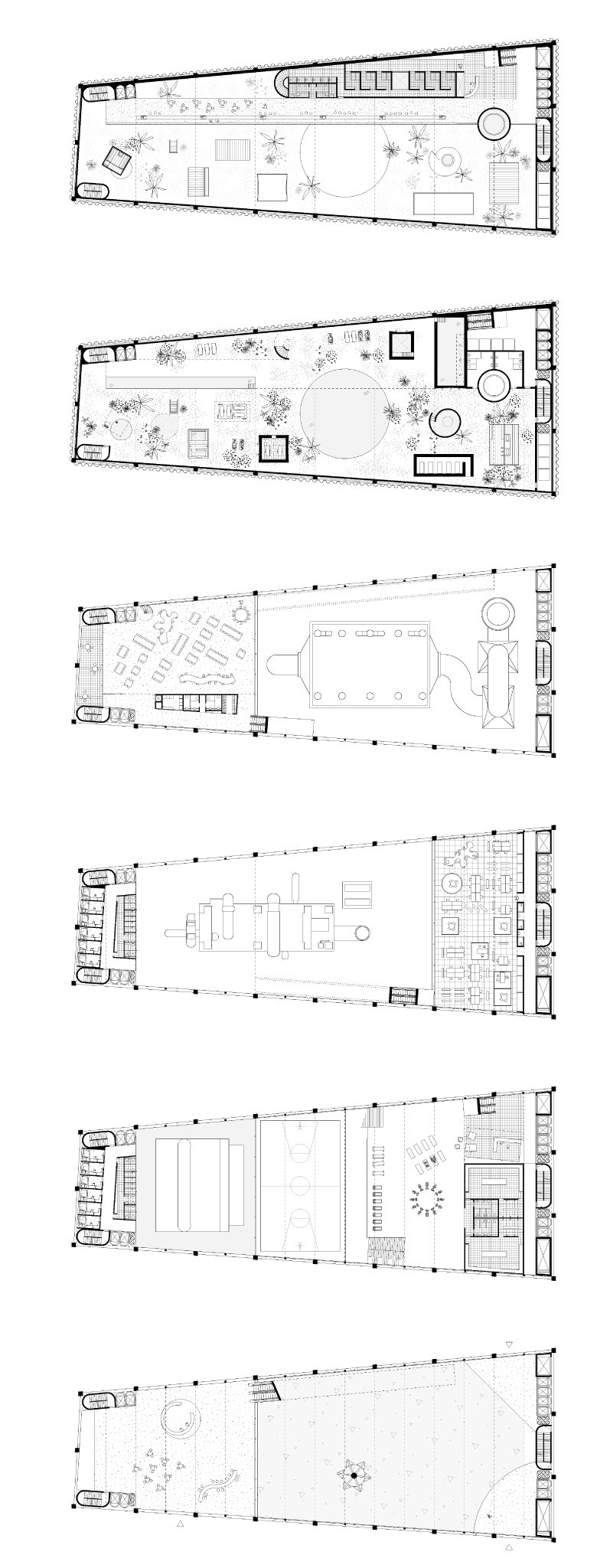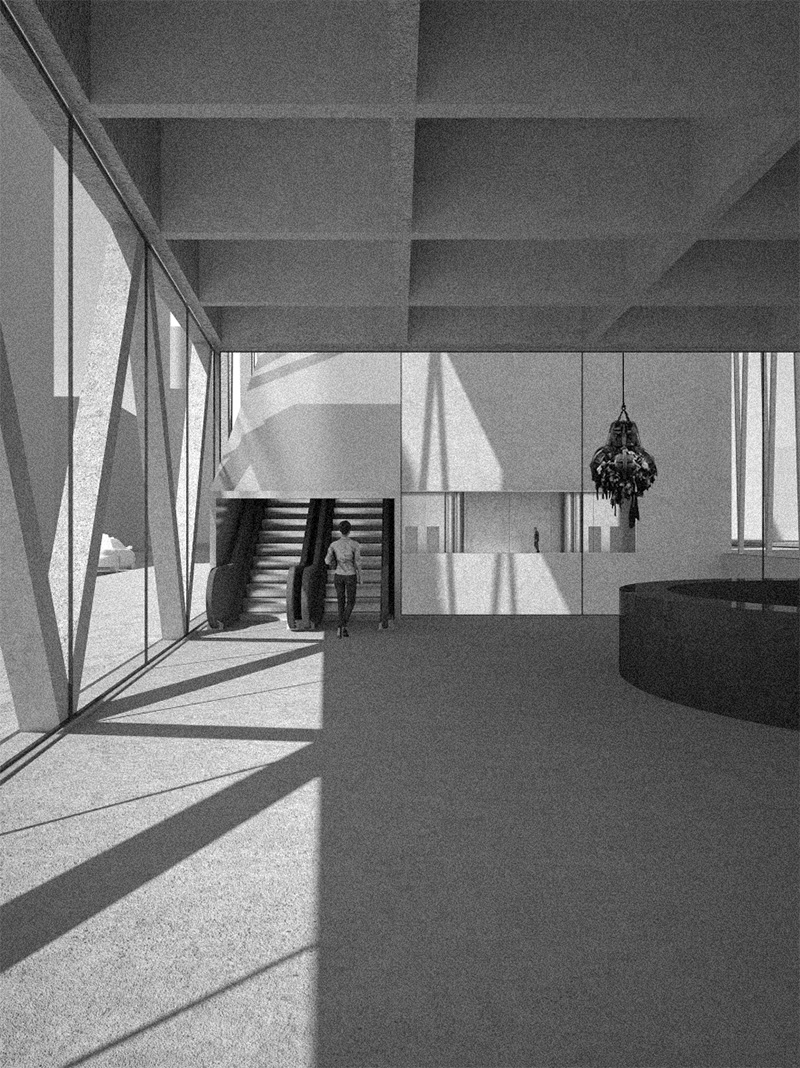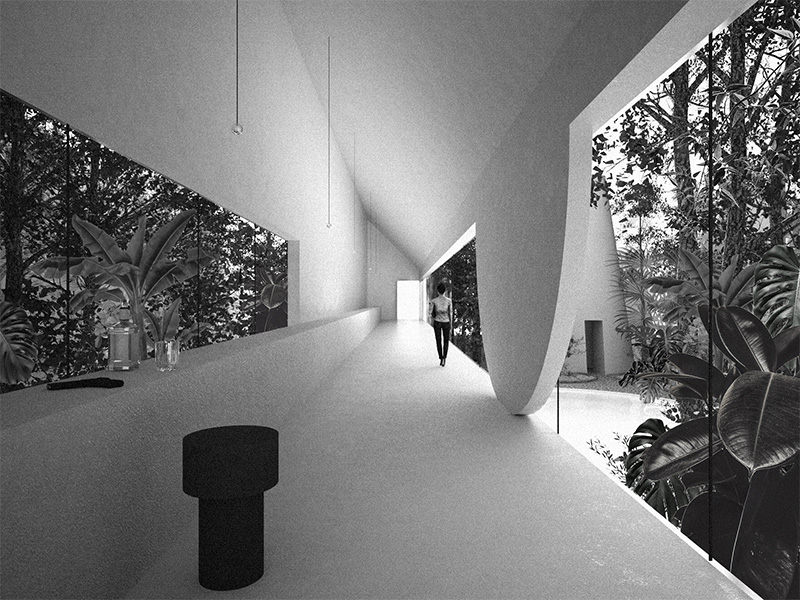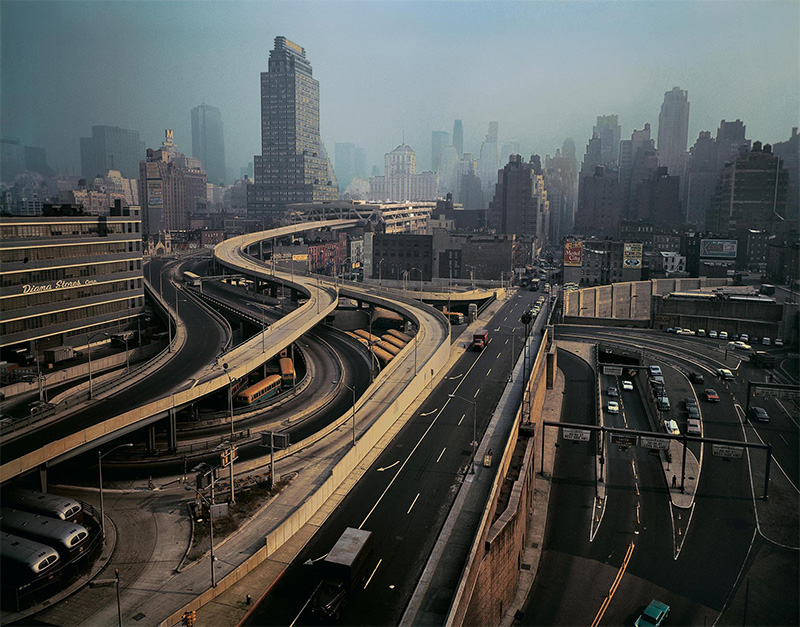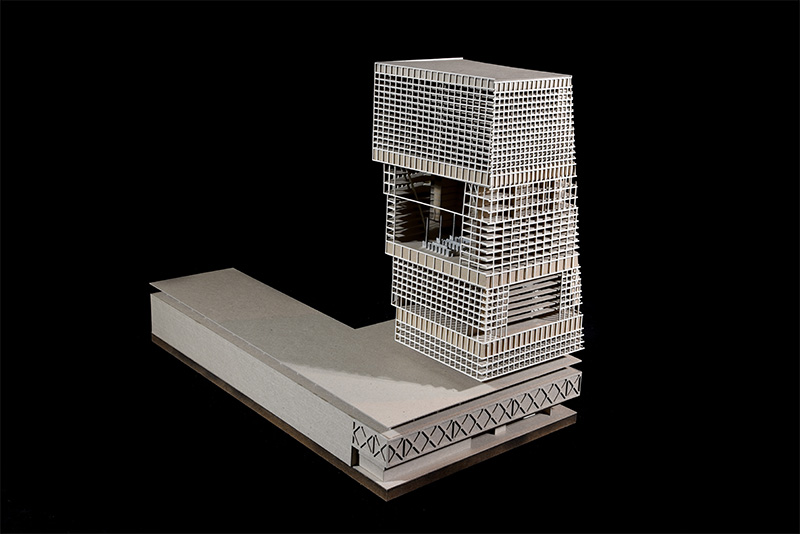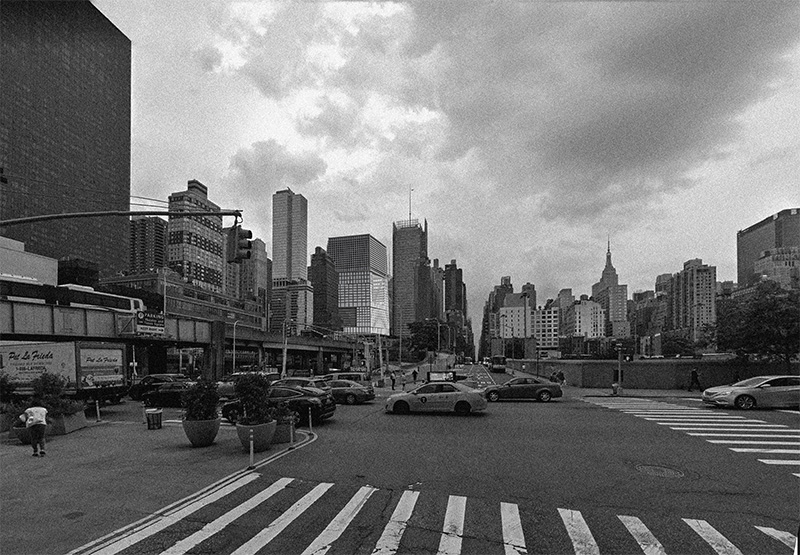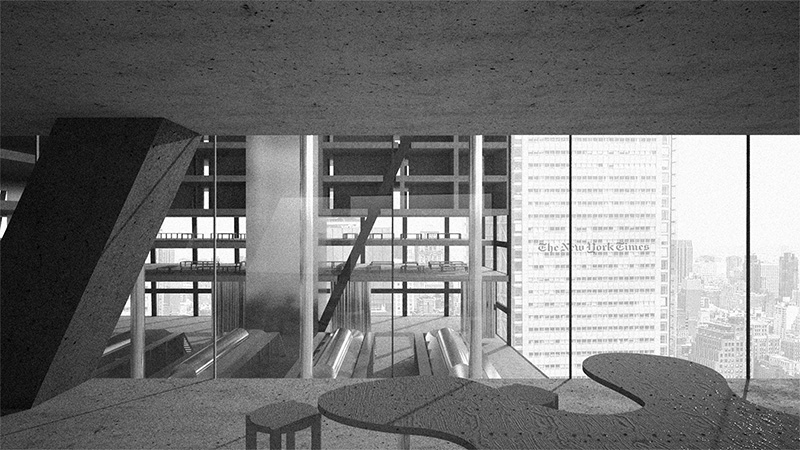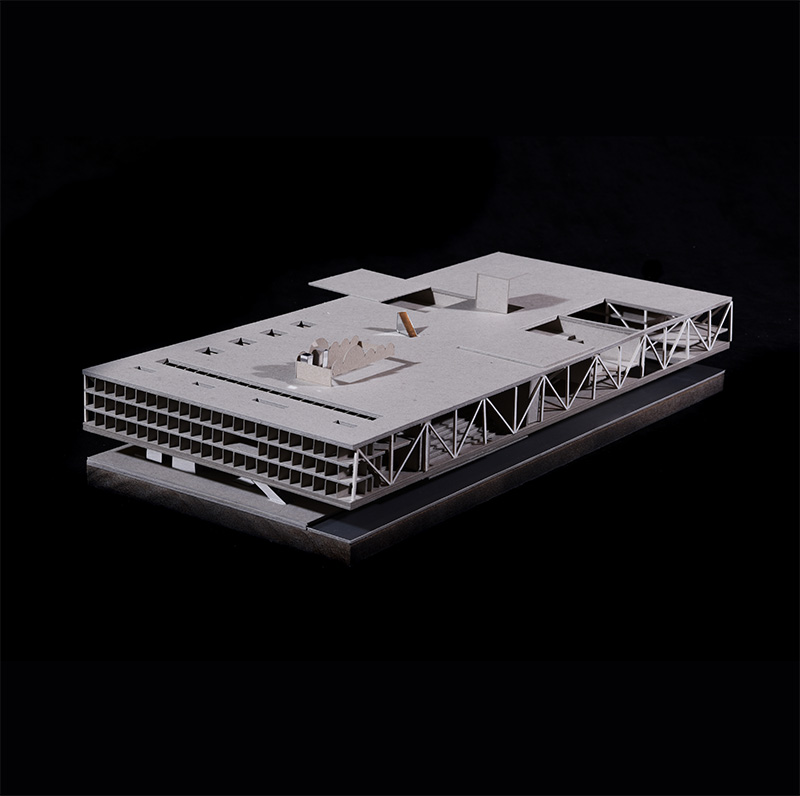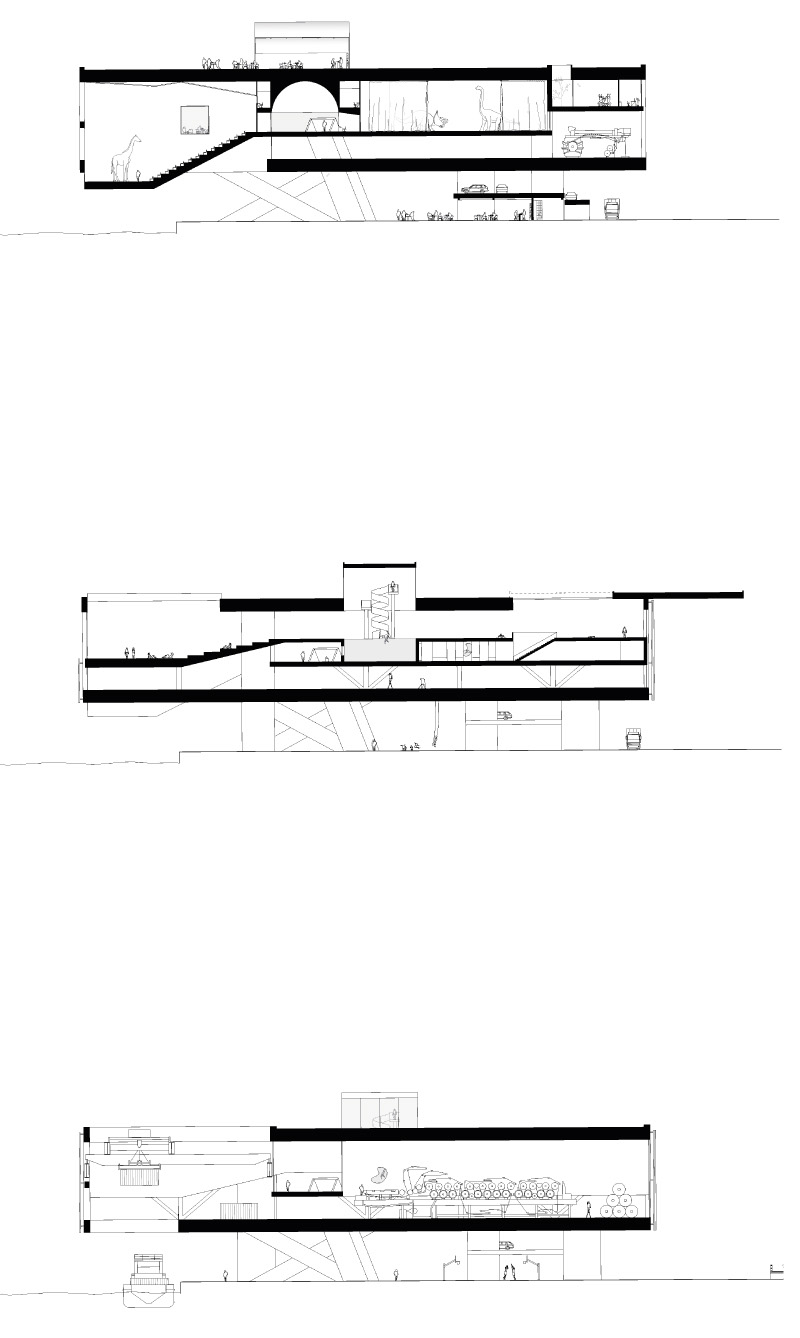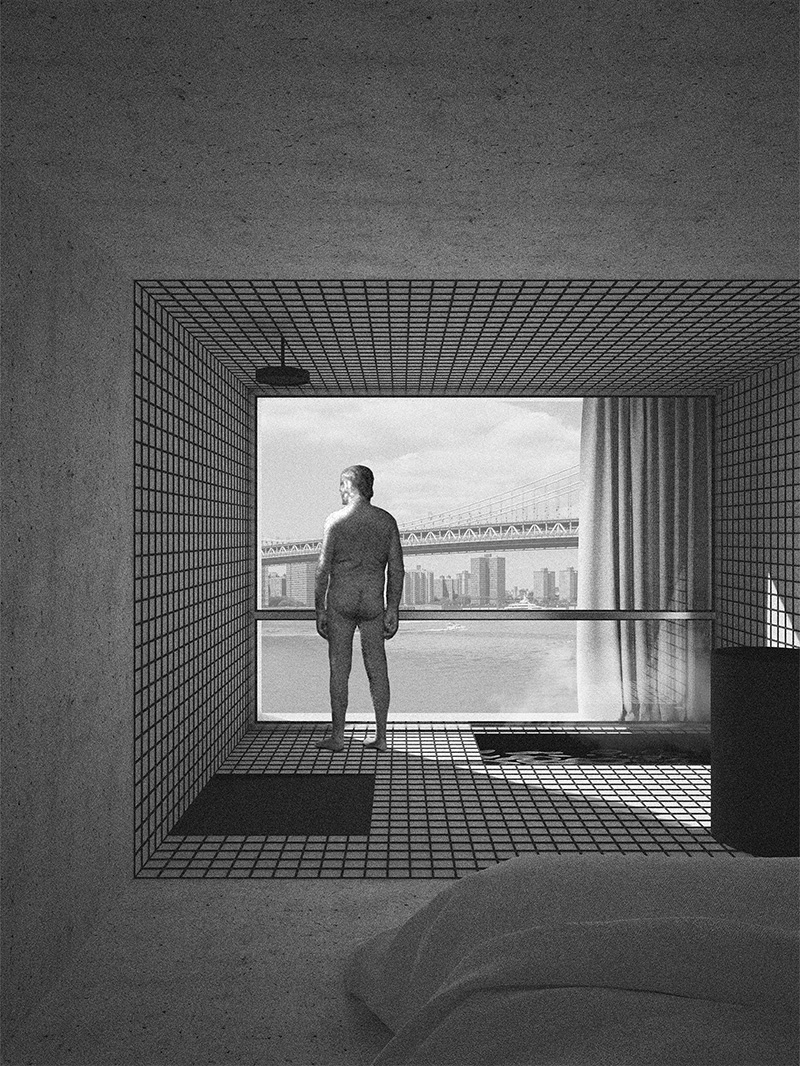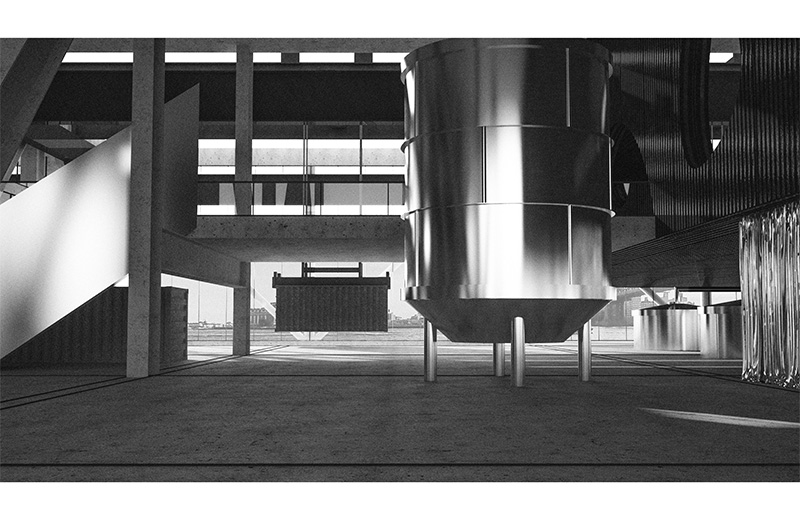The projects deals with the symbiotic interdependance of large recycling facilities and public programs to garantee their inclusion in Manhattan’s dense urban fabric through existing infrastructures.
On January 1st, 2018, China stops the import of a large range of waste types, thus compromising the global waste market. The garbage has lost so much value that certain municipalities in the USA stop picking up the waste. In New York City, piles of trash are bording the avenues.
The city produces 2,5Kg waste per person during a day, against an average of 2,0Kg in the rest of the country, and 1,1Kg in the rest of the world.
The project emits the hypothesis, that Manhattan constitutes an urban fabric, which is developped and diverse enough to be able to integrate the treatment of it waste in its urban fabric.
The project develops three buildings becoming different recycling sites. The choice of three relies on the most produced garbage types, which are non recyclable, plastic and paper waste.
Each type of waste has its proper way of conveyance, leading to a particular recycling site. Each recycling site functions as an urban hybrid, linking recycling programs to public programs in a symbiotic way.
The product issued out of the recycling process is consumed or redistributed onsite. The different project’s location are ensued from the means of conveyance, as strategical places of convergence.
URBAN STRATEGY
The non recyclable waste is conveyed through existing subway lines during the off-peak hours. The lines are converging in Lower Manhattan at Rector’s station, where the non recyclable waste collecting facility is then located. The project burnes the waste in order to gain electrical energy powering Manhattan.
The plastic waste recycling plant is grafted on top of the existing Public Authority Bus Terminal in Midtown. The bus terminal’s functions are preserved. Taking advantage of the immediate highway access, the plastic waste is conveyed by waste trucks into the bus terminal.
The waste is than recycled inside the new building, erected on the north side of the existing construction. Hydrogene is gained during the process, serving as less pollutant fuel for the public buses.
The third project is located in the borough Lower East Side, near Manhattan bridge. Barges pick up paper waste on Manhattan’s riverbanks, getting filled progessively while shipping downwards the stream in direction of the recycling plant.
Once they have been unloaded, the empty barges ship up the stream again.
To the paper-recycling facility is added a paper mill and a newspaper editorial office. Thus the paper wasteis reused onsite, by the newspaper office, printing their daily newspaper.
NON RECYCLABLE WASTE
The non recyclable waste facility is thought as a primar self-sufficient structure which consists in a stackingof the waste facility’s machines.
The waste arrives underground and is brought up into the building where itis incinerated in order to produce electricty. A major part of the machinery is composed of filters, purifying the rejected air.
A second strucure is added to the primar structure, implementing public programs. The programs coexist in a symbiotic way. The recycling process, through its physical characteristics, generates other programs : the heat excesses generated permit the creation of a proper microclimate.
Thus, the construction is crowned by a tropical garden, warmed by the machines.
A capsule hotel, sport facilities and offices complete the building. Escalators link the different programs. The capsule rooms are situated on the south facade, overlooking the Statue of Liberty. Bathrooms are oriented to the building’s inner, overlooking the machinery.
PLASTIC WASTE
The PABT is an existing bus terminal opened in 1950, located in the heart of Midtown. The project proposes to keep the, to be demolished, bus terminal, adding the recycling plant.
The project aims to take advantage of the infrastructural facilities, using the existing ramps to convey the waste.
The terminal’s roofdeck is made accessible, becoming a new recreationnal public space. The project also gathers a hospital, a learning center and housing programs.
Conceptually, the project evolves around an inner spatial core, dedicated to the recycling facilities, around which are grafted public programs.
Servant technical storeys three-partition the building spatially, structurally, and programatically, standing for the different phases of the recycling process.
As the waste goes up in the building, it becomes thiner, ending up as hydrogene fueling the buses, redistributed in the bus terminal below.
PAPER WASTE
Situated at the outskirts of Lower East Side, the paper recycling plant connects the residential borough with the Hudson riverbank.
The building is detached from the ground, creating a covered public space.
The project itself functions as a hyperactive movable hub, a reversible structural machine gathering different programs.
The 210x90m wide parallelepiped is cantilevered over the river, thus enabling a covered disembarkement of the paper waste. In addition to the paper recycling plant, the project gathers a paper mill and a newspaper editorial office, reusing the waste by printing the news on recycled paper.
On the 2nd level are inserted a hotel overlooking Manhattan Bridge, an event space and a public swimming pool dedicated to the residential borough, and the newspaper editorial. Their implantation is defined by the recycling plant’s layout and the different machine’s height, arranged on the level below. Fire staircases establish a link with the ground through their structural and circulatory vocation.
The precise volume functions as a box, able to unfold itself, bringing out its inner happenings. The diving platform for example, protrudes from the building, creating a connection between the divers and the happenings on the roof.
CONCLUSION
Each project aims to insert a large recycling plant into a dense urban fabric, in order to minimize the involved actors. The important plants are integrated in the city through the reuse of major existing infrastructures and associations with public uses.
Each project tries to open up possibilities : the potential of a site, the hidden opportunity of a particular situation, of a programmatic conflict. It is about dealing with uncertainty, about enabling unforeseen scenarios. It reveals hidden opportunities and brings together incompatibilities.

